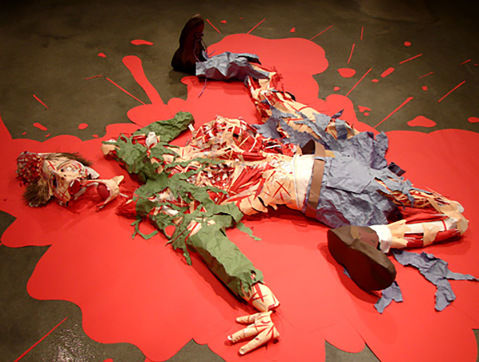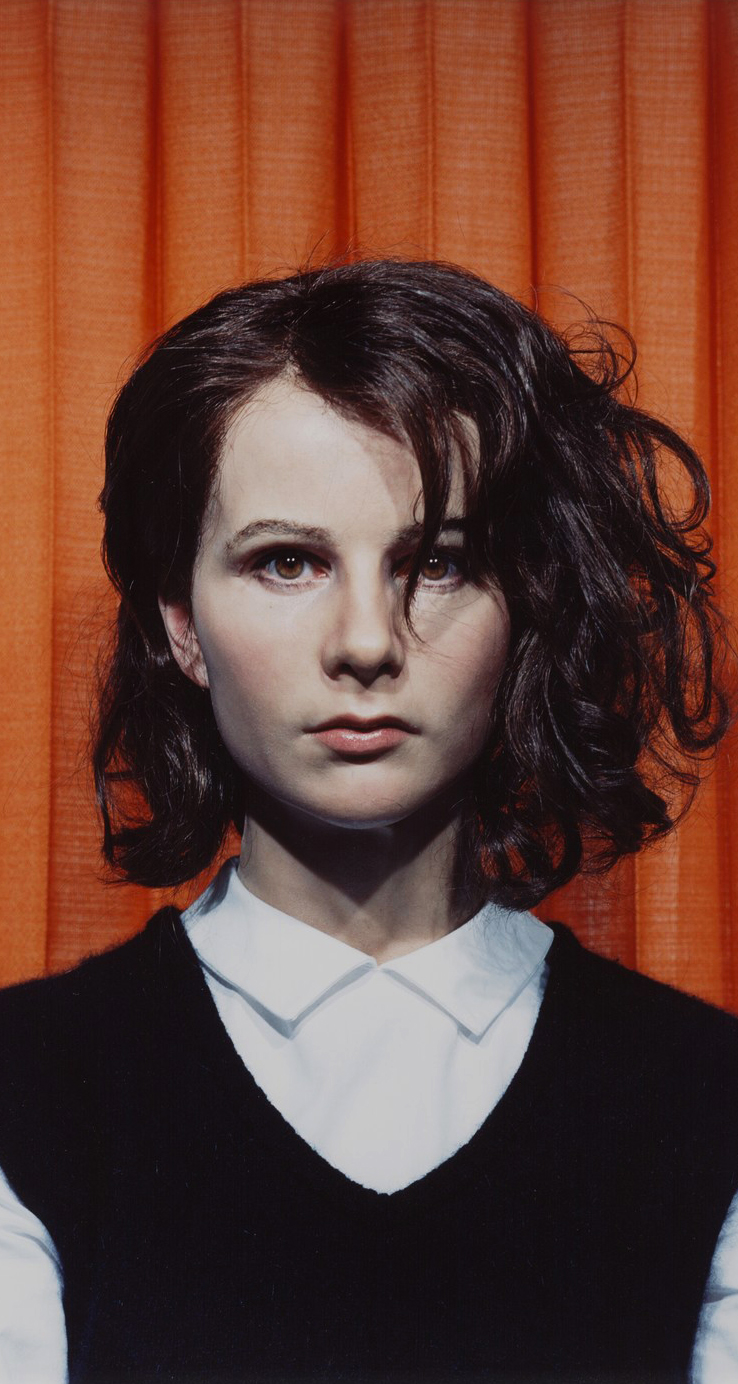


gillian wearing
self-portrait
Los autorretratos de Wearing exploran la fotografía como farsa, además de examinar concepto de identidad y representación. Con una meticulosa atención al detalle y sofisticadas prótesis de silicona, Wearing crea extraordinarios autorretratos que imitan fotos de su álbum de familia. Estas imágenes triunfan porque formulan preguntas sobre la familia, las relaciones y el yo, aspectos todos ellos importantes en la fotografía contemporánea. Otros retratos de la serie, incluyen a su hermano, su abuela y su abuelo.

ARNE QUINZE
Арне Куинз
Chaos Life
The composition of a Chaos artwork started as a self-portrait; the representation of what’s going on in his head. But soon a shift occurred towards an enduring research on the definition of chaos in society. Often these artworks are filled with a mass of small wooden sticks attached to each other, looking enormously chaotic. “There’s no chaos, only structure” is a tagline in some of his work expressing his inner self and how he describes his thoughts. To him there is no chaos, everything is structured even in the chaos you find structure. There’s no such thing as chaos in Quinze’s world or at least not in the sense of how society defines chaos. Chaos does exist, as a form of structure. Chaos is irretrievably linked with life. In life everything is a matter of rhythm. Something without a rigid structure is part of the organic order in life.
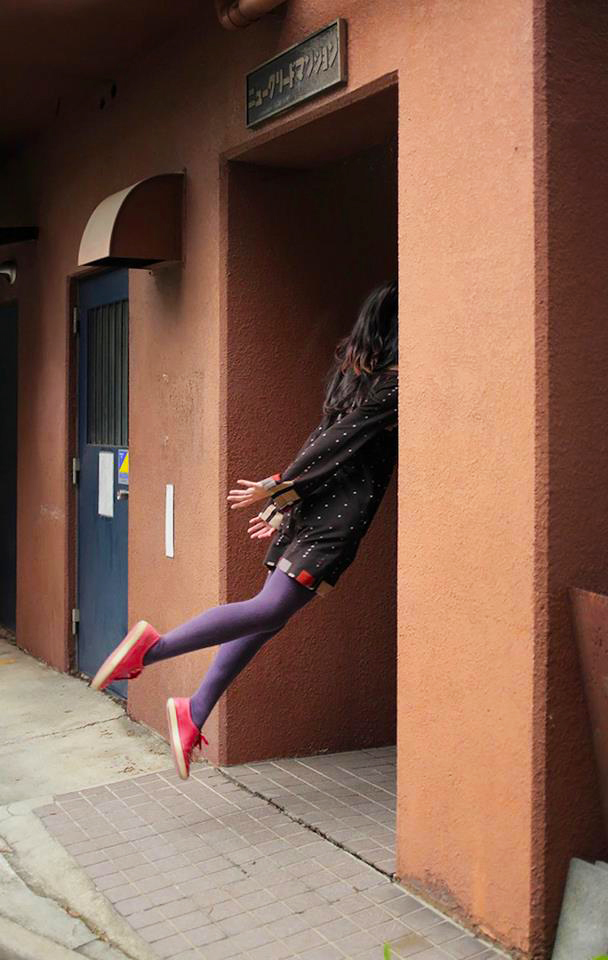
HAYASHI NATSUMI
Today’s Levitation
Tokyo-based photographer Natsumi Hayashi is known as the “levitation girl.” She became an internet sensation over the past year with her “Today’s Levitation” series, a self-portrait project consisting exclusively of images that capture her in mid-air, usually against an everyday urban backdrop.
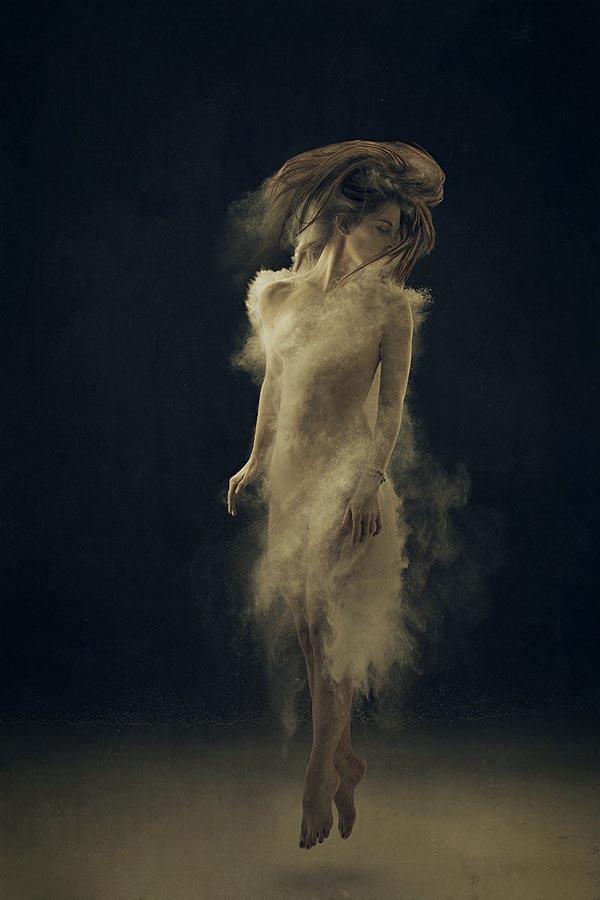
AMELIA FLETCHER
Self-Portrait
“My roots in the Carolina mountains have heavily influenced what inspires my work now. Natural elements and personal histories tend to be the red thread that runs all throughout my portfolio. I strive to create work that is meaningful, from the simple portrait to a wedding collection.”

kalliope amorphous
Glass Houses: Self-Portraits In A Moving Mirror
“In this project, I confront questions of self-image and the ways in which our interior worlds conflict with our exterior form. How does the image that we present to the world differ from what we see when we look in the mirror? If our desires, fears, secrets and vulnerabilities were manifested physically, what might they look like?”

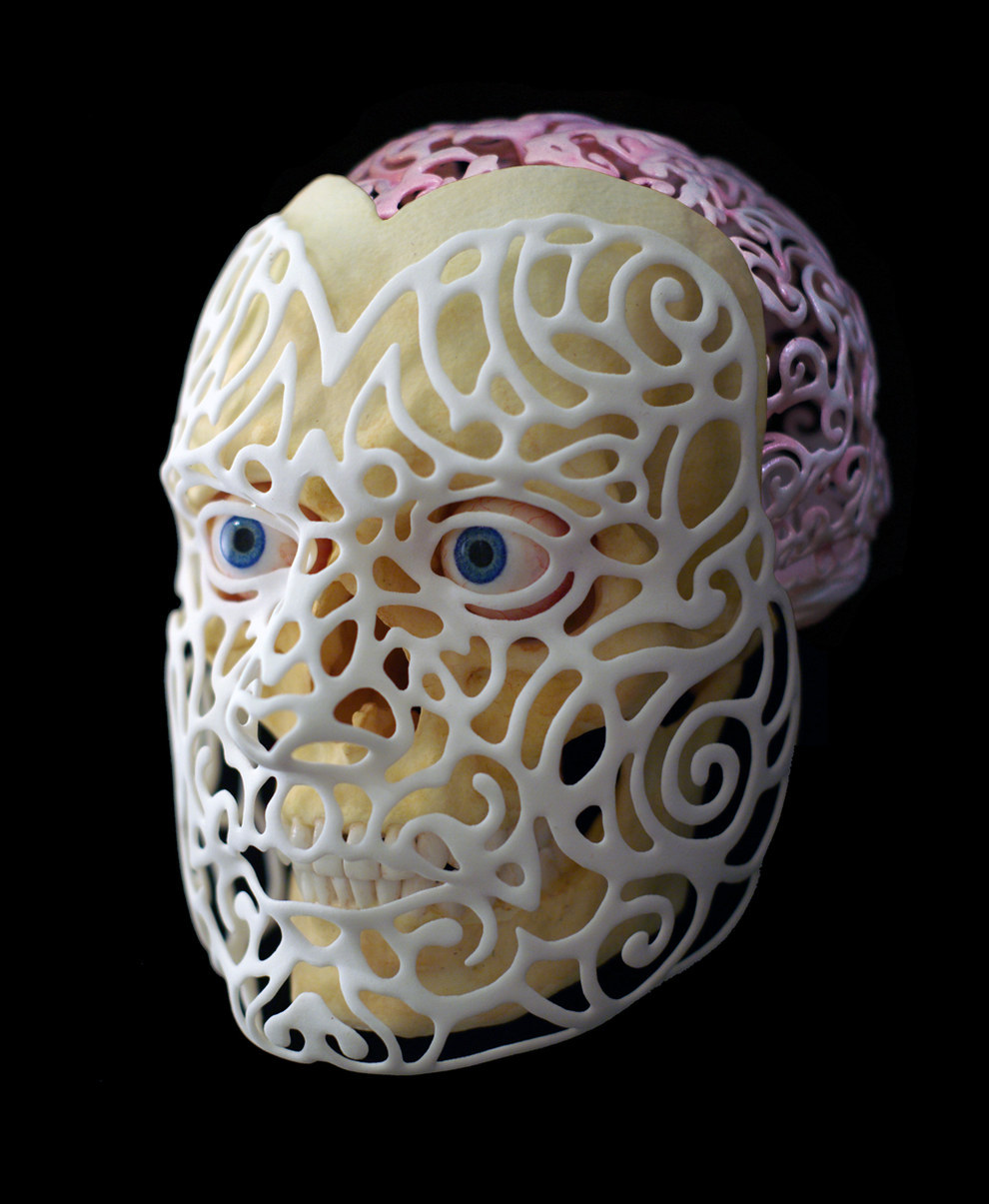


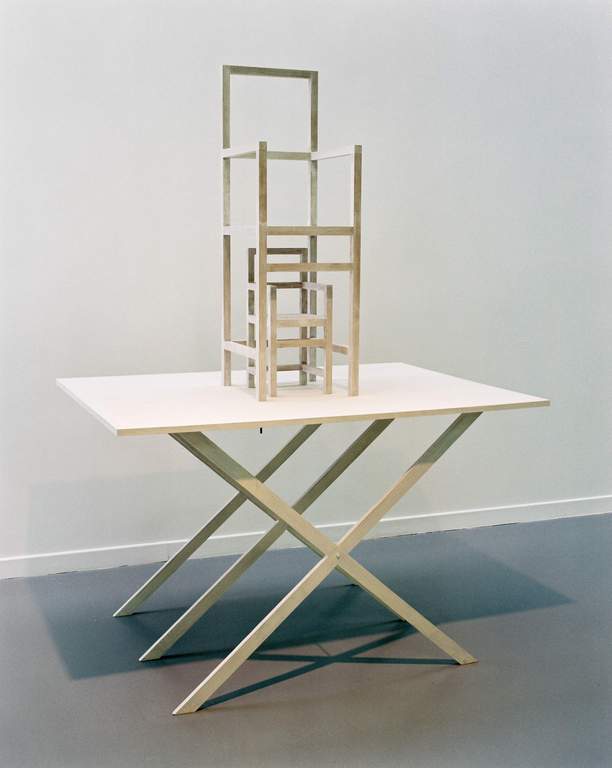
JAN VERCRUYSSE
Les Paroles
According to Jan Vercruysse, art no longer has a place in this world. As a result, he seeks, through his work, a new place for art and new conditions in which to work. His earliest photographic works recreated historical subjects, such as self-portraits, still lifes and mythological scenes. Gradually, he evolved a sculptural vocabulary of narrow rooms, empty frames and bases without objects. The sacred spaces created by Vercruysse in these works are known as Chambres or Tombeaux and represent the artist’s last-ditched attempts to create art that refers only to itself. His later works, such as plaster pianos, blue Murano glass musical instruments and bronze and ceramic turtles, achieve a perfect equilibrium between conceptual conviction and aesthetic concerns, and also reflect a real pleasure of making.

Tim Noble and Sue Webster
spinning heads
Noble and Webster produce silhouetted self-portraits through carefully constructed mounds of rubbish and debris illuminated at one precise angle, transforming the abstract pieces into figurative composites. Each sculptural installation represents this duality of art and also references the duality of man. Things appear to be far more complex than what first meets the eye. Whether you first notice the figurative shadow or the abstract wood piles, there is always the other to view second as its other half.
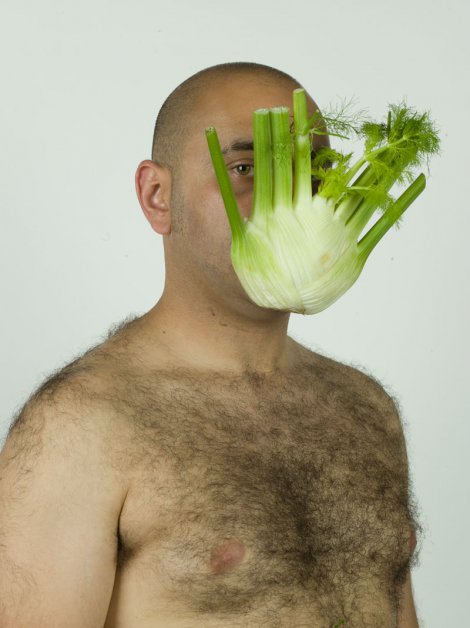
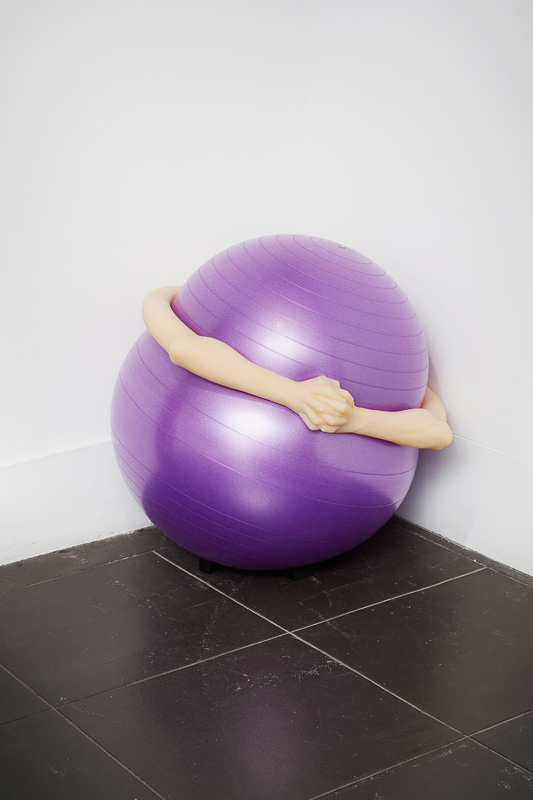

Gillian Wearing
Self-Portrait at Three Years Old
In den letzten zwei Jahrzehnten haben Gillian Wearings Filme, Fotografien und Skulpturen öffentliche Persönlichkeiten und das Privatleben untersucht. Seit Beginn ihrer Karriere hat die Künstlerin Theatertechniken, Reality-Fernsehen und Fly-on-the-Wall-Dokumentarfilme verwendet, um Erzählungen zu konstruieren, die persönliche Fantasien und Geständnisse, individuelle Traumata, Kulturgeschichten und die Rolle der Medien. Die Anonymität durch aufwändige Masken, Kostüme und Rollenspiele ist nach wie vor ein kritischer Bestandteil von Wearings Praxis und einflussreicher Untersuchung der Art und Weise, wie sich Individuen anderen präsentieren, wenn das Selbst vorübergehend verborgen ist.
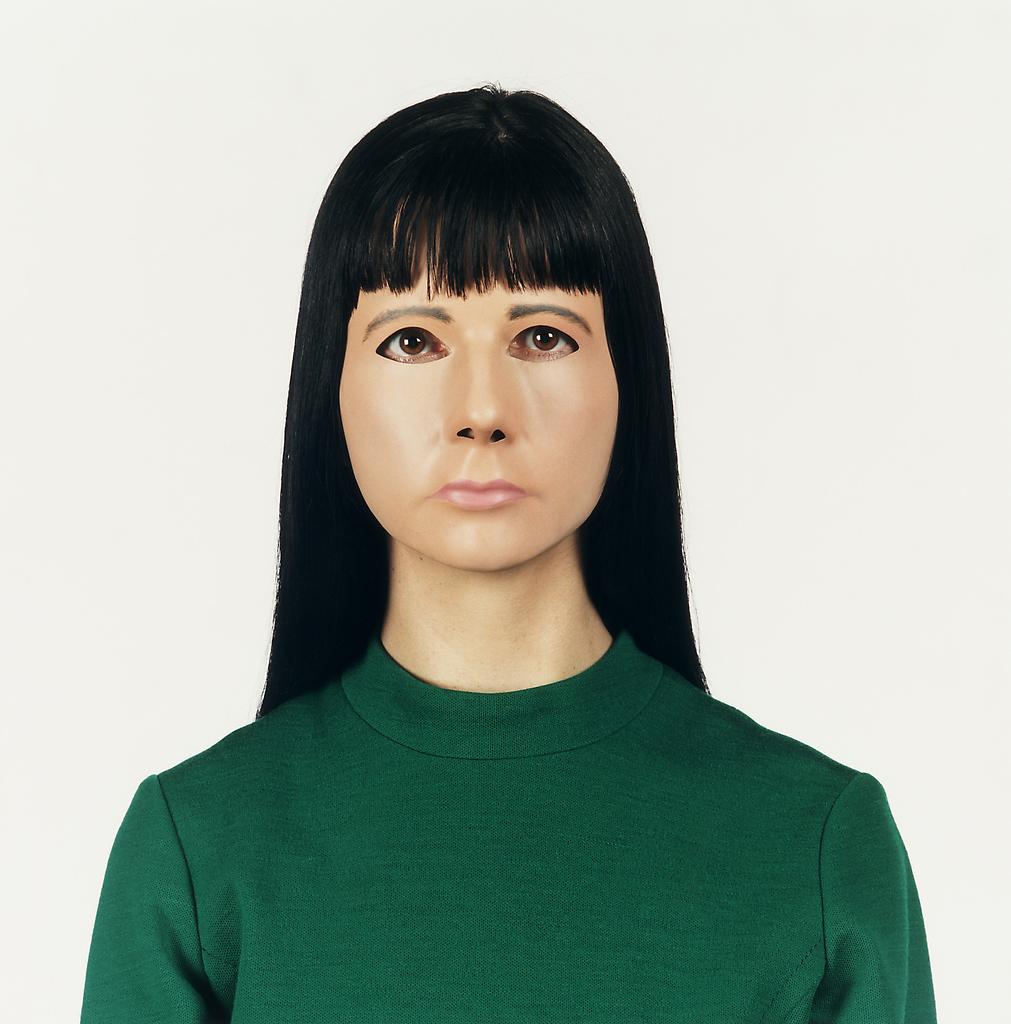
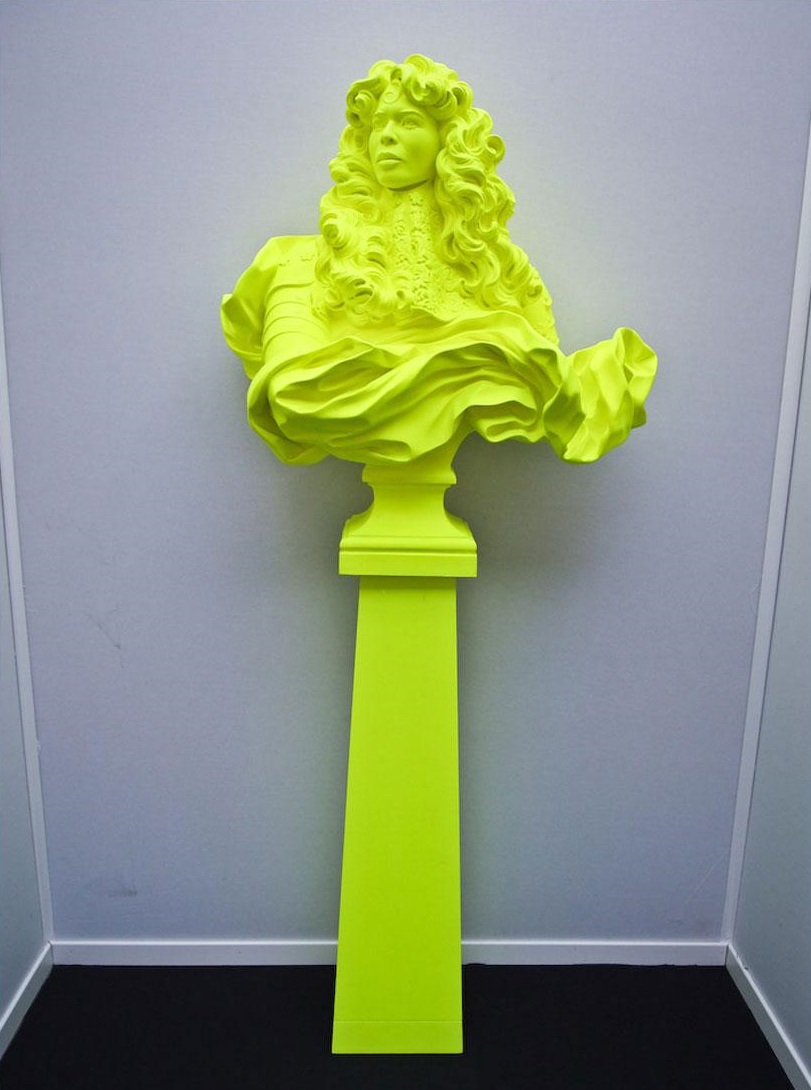
KIMIKO YOSHIDA
كيميكو يوشيدا
吉田公子
키미코 요시다
קימיקו יושידה
КИМИКО ЙОШИДА
A unique artist with sophisticated style, Yoshida’s Asian influenced self portraits are unprecedented. Her work evokes pertinent questions as to the role of women in modern Asia and is strongly driven by feelings of transformation and fleeting:
“ … when I was three, my mother threw me out of the house. I left clutching a box filled with all my treasures. I went to a public park. The police found me there the next day. Since then, I’ve always felt nomadic, errant, fleeing.”
“Art is above all the experience of transformation. Transformation is, it seems to me, the ultimate value of the work. Art for me has become a space of shifting metamorphosis. My Self-portraits … are only the place and the formula of the mutation.”

HELEN CHADWICK
海伦查德威克
ヘレン·チャドウィック
헬렌 채드윅
Хелен Чедвик
Vanitas II
In this self-portrait, Chadwick uses her own body to examine the politics and associations surrounding female portraiture and the nude. There is a direct reference to the long tradition in art of female Vanitas figures, contemplating their own image in a mirror. They illustrate the fragility of physical beauty and all human creation.
Here, the artist gazes into a mirror, which reflects one of her works, the Oval Court installation, her own ‘Garden of Delights’. It is a defiant image, confronting the inevitable process of change but not as a de-personalised or idealised nude. Rather she portrays herself as a creator in control of her own image.
